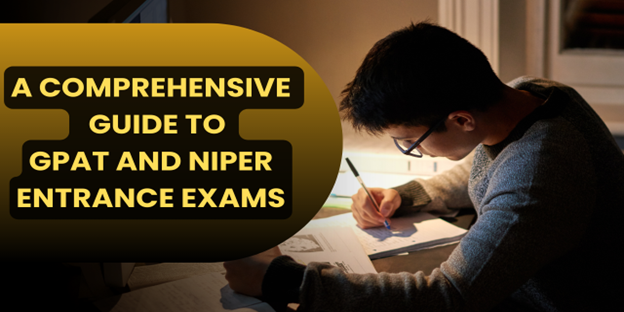Introduction:
The Graduate Pharmacy Aptitude Test (GPAT) and the National Institute of Pharmaceutical Education and Research (NIPER) entrance exams are two of the most important exams for pharmacy students in India. These exams play a crucial role in determining admission to postgraduate pharmacy programs and are highly competitive. In this blog, we will provide a detailed guide to help you understand the GPAT and NIPER entrance exams, including their eligibility criteria, exam pattern, syllabus, and preparation tips.
GPAT Entrance Exam:
The GPAT is a national-level entrance exam conducted by the National Testing Agency (NTA) for admission to postgraduate pharmacy programs in various institutes across India. Let’s delve into the details of the GPAT exam:
Eligibility Criteria:
To be eligible for the GPAT exam, candidates must have a bachelor’s degree in Pharmacy (4 years after 10+2, including lateral entry students) or must be in the final year of their bachelor’s degree program. There is no age limit to appear for the exam.
Exam Pattern:
The GPAT exam is a computer-based test (CBT) consisting of 125 multiple-choice questions (MCQs). The duration of the exam is 3 hours. Each correct answer carries 4 marks, while each incorrect answer deducts 1 mark.
Syllabus:
The GPAT exam covers various topics related to pharmacy, including pharmaceutics, pharmaceutical chemistry, pharmacology, pharmacognosy, pharmaceutical analysis, biochemistry, biotechnology, microbiology, and clinical pharmacy. Candidates should have a thorough understanding of these subjects to perform well in the exam.
Preparation Tips:
To prepare for the GPAT exam, candidates should start by understanding the exam pattern and syllabus. Online study materials and previous years’ question papers can also be helpful. Taking mock tests and solving sample papers can improve time management skills and provide a real exam-like experience.
NIPER Entrance Exam:
The NIPER entrance exam is conducted by the National Institute of Pharmaceutical Education and Research for admission to its postgraduate and doctoral programs in pharmacy.

Let’s explore the details of the NIPER entrance exam:
Eligibility Criteria:
The eligibility criteria for the NIPER entrance exam vary for different programs. Generally, candidates must have a bachelor’s degree in Pharmacy or a related field with a minimum percentage of marks. The age limit for the exam is usually 32 years for the master’s program and 35 years for the doctoral program.
Exam Pattern:
The NIPER entrance exam consists of multiple-choice questions (MCQs) and subjective questions. The duration of the exam is 2 hours. The number of questions and marking scheme may vary for different programs.
Syllabus:
The syllabus for the NIPER entrance exam includes topics such as pharmaceutical analysis, medicinal chemistry, pharmacology, pharmacognosy, pharmaceutical technology, biotechnology, biochemistry, and pharmaceutical management. Candidates should have a strong foundation in these subjects to excel in the exam.
Preparation Tips:
To prepare for the NIPER entrance exam, candidates should thoroughly study the prescribed syllabus and refer to standard textbooks such as “Organic Chemistry” by Morrison and Boyd, “Pharmacology” by Rang and Dale, and “Pharmaceutical Analysis” by Chatwal. Online study materials and previous years’ question papers can also be beneficial. Solving mock tests and sample papers can help candidates understand the exam pattern and improve their problem-solving skills.
Comparison between GPAT and NIPER:
While both the GPAT and NIPER entrance exams are important for pharmacy students, there are some key differences between them:
Difficulty Level:
The GPAT exam is generally considered to be less difficult compared to the NIPER entrance exam. The NIPER exam is known for its higher level of difficulty and requires in-depth knowledge of the subjects
Number of Seats:
The number of seats available through the GPAT exam is higher compared to the NIPER entrance exam. NIPER institutes have limited seats, making the competition tougher More Points on
Importance for Admission:
GPAT scores are accepted by various institutes across India for admission to postgraduate pharmacy programs. On the other hand, the NIPER entrance exam is specifically conducted for admission to the prestigious NIPER institutes.
For More Info Contact – +91-8692820106
Conclusion:
The GPAT and NIPER entrance exams are crucial for pharmacy students aspiring to pursue postgraduate studies in India. By understanding the eligibility criteria, exam pattern, syllabus, and following effective preparation tips, candidates can increase their chances of success in these competitive exams. It is important to dedicate sufficient time for preparation, practice regularly, and stay focused. Good luck!
And do you want? A detailed video orientation on all the entrances watch now


